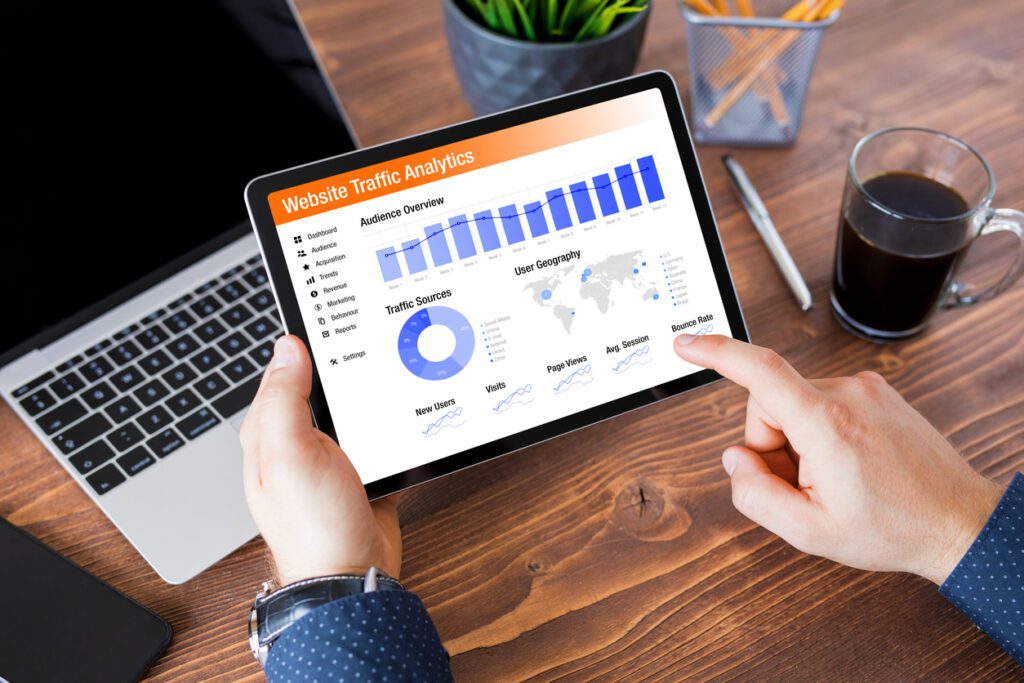In today’s digital age, having a solid online presence is essential for any business looking to thrive and grow. Search engine optimization (SEO) is critical in ensuring your website ranks high on search engine results pages (SERPs) and attracts a steady stream of targeted traffic. However, SEO can be complex and time-consuming, so many companies choose to work with a reliable and trustworthy agency partner. If you’re an in-house marketing manager or a small to medium-sized business owner looking to generate more business from your website, you may be interested in exploring how artificial intelligence (AI) tools such as ChatGPT can help take your SEO efforts to the next level.
ChatGPT is a state-of-the-art AI language model developed by OpenAI that can generate high-quality content on various topics. In this guide, we’ll dive deep into how ChatGPT and SurferSEO Content Editor work and explore their benefits for SEO. We’ll also provide practical tips and strategies for optimizing your content with these tools and show you how to use them together for maximum impact. Let’s dive in and discover how to use ChatGPT for SEO.

What Is ChatGPT and How Does It Work?
ChatGPT is a cutting-edge AI tool that uses natural language processing (NLP) to generate high-quality content. Additionally, it is built on the GPT-3.5 architecture and can understand human language and generate text almost indistinguishable from that written by humans. Here’s how it works:
1. Understanding Natural Language
The first step in using ChatGPT is to input a prompt or question in natural language. It uses natural language processing to understand the input and create a context for generating the output. You can also input various queries, from short sentences to long paragraphs.
2. Preprocessing and Tokenization
Once ChatGPT has understood the input, it undergoes preprocessing and tokenization. This involves breaking down the text into smaller, more manageable pieces and converting it into a numerical format that the AI can understand.
3. Generating Output
After tokenizing the text, ChatGPT uses its machine-learning algorithms to generate output. It does this by predicting the next word or phrase in the sentence based on the input and the data it has been trained on.
4. Filtering and Sorting
Once the output has been generated, ChatGPT filters and sorts it based on various criteria, such as relevance, coherence, and grammatical correctness. Moreover, this ensures that the output is of the highest quality and is suitable for the intended purpose.
5. Evaluating and Adjusting
After the output has been filtered and sorted, ChatGPT evaluates it to ensure that it meets the desired standards. It adjusts its algorithms and parameters to improve the output quality of output if it does not meet the criteria.
6. Providing the Final Output
Finally, ChatGPT provides the final output, anything from a short paragraph to a full-length article. The output is generated in natural language and is suitable for various applications, such as content creation, SEO, and customer service.

Benefits of Using ChatGPT for SEO
Using ChatGPT for SEO offers a range of benefits that can help businesses and individuals achieve their digital marketing goals. Here are some of the key benefits:
- Improved content Quality: One of the main benefits of using ChatGPT for SEO is the improved quality of the content. By leveraging its natural language processing and machine learning capabilities, it can generate high-quality content that is engaging, informative, and optimized for search engines.
- Time-Saving: SEO professionals can use it to save valuable time. Rather than spending hours researching and writing content, it can generate content quickly and efficiently. This can also save time for essential tasks like keyword research, link building, and website optimization.
- Customizable Output: ChatGPT for SEO also offers customizable output, allowing users to specify the length, tone, and focus of the content. This helps ensure the content is tailored to the user’s specific needs and target audience. Additionally, it can generate content on a wide range of topics, from technical SEO to product descriptions and blog posts.
- Improved SEO Performance: By generating high-quality, optimized content, ChatGPT for SEO can help to improve SEO performance. This includes improving search engine rankings, increasing website traffic, and boosting engagement metrics such as time on page and bounce rate. It can also help identify relevant keywords and phrases, optimize on-page content, and create compelling meta descriptions and title tags.
- Increased Efficiency: ChatGPT for SEO can increase efficiency for SEO professionals and content creators. Rather than researching and writing content, it allows users to focus on other essential tasks, such as keyword research, link building, and website optimization. This can lead to improved overall efficiency and better results in less time.

How to Use ChatGPT for Keyword Research
ChatGPT for SEO can assist in identifying relevant keywords and phrases that align with the target audience’s search intent. With its advanced natural language processing and machine learning capabilities, it can analyze search data to generate a list of potential keywords and phrases that can be used for content optimization. Here are the steps to follow for effectively using ChatGPT for keyword research with search intent in mind:
Step 1. Define Your Topic
Start by defining the topic that you want to focus on. This could be a product, service, or industry-related topic.
Step 2. Generate a List of Seed Keywords
Next, generate a list of seed keywords relevant to your topic. These are broad terms that describe the main topic you want to target.
Step 3. Analyze and Refine the List
Please review the list of keywords generated by ChatGPT and refine it based on relevance, search volume, and competition. Consider user intent and long-tail keywords.
Step 4. Organize Keywords Into Groups
Organize your final list of keywords into groups based on relevance and search intent. This can also help ensure your content is keyword based.
Step 5. Optimize Content
Finally, use your list of optimized keywords to optimize your content. This includes including relevant keywords in titles, meta descriptions, headers, and throughout the body of your content.
Best Practices for ChatGPT Keyword Research
To get the most out of ChatGPT for keyword research, it’s essential to follow some best practices:
- Focus on long-tail keywords: Long-tail keywords are longer, more specific search terms that are less competitive but often have higher conversion rates.
- Consider user intent: When choosing keywords, consider the purpose behind the search. Are users looking for information, products, or services?
- Analyze competition: Analyze the competition for each keyword and consider factors such as search volume, difficulty, and CPC.
- Use keyword research with other SEO tactics: While keyword research is essential, it should be used with other SEO tactics such as on-page optimization, link building, and social media marketing.
By following these best practices and leveraging ChatGPT’s natural language processing and machine learning capabilities, users can effectively conduct keyword research and optimize their content for improved search engine rankings and increased website traffic.
Tips for Optimizing Content Using ChatGPT
Now that you understand how ChatGPT can be used for SEO let’s dive into some tips for optimizing your content using this powerful tool.
- Generate title tags: One of the most powerful features of ChatGPT is its ability to generate topic ideas and titles based on a given keyword or phrase. Use this feature to create new ideas for your content and ensure your titles are optimized for SEO.
- Create engaging introductions and conclusions: The introduction and conclusion of your content are critical for engaging readers and driving conversions. Additionally, use ChatGPT to generate ideas for these sections and ensure they are optimized for search engines and readers.
- Optimize your content for readability: Readability is critical to SEO, impacting user engagement and search engine rankings. Use ChatGPT to optimize your content for readability and ensure that it is easy to understand and enjoyable to read.
- Optimize your content for search engines: In addition to optimizing your content for readers, you should also ensure that it is optimized for search engines. Use ChatGPT to generate relevant keywords and phrases and ensure your content is structured in a way that is easy for search engines to crawl and understand.
- Create meta descriptions and tags: Meta descriptions and tags are critical for SEO and user engagement. Use ChatGPT to generate compelling meta descriptions and tags that accurately reflect your pages’ content and entice users to click through to your site.
- Optimize your content for voice search: As more and more users turn to voice search, optimizing your content for this new search format is essential. Use ChatGPT to generate long-tail keywords and phrases optimized for voice search and ensure that your content is structured in a way that is easy for voice assistants to understand.

ChatGPT vs Traditional SEO Tools
Many traditional SEO tools are designed to help businesses improve their online visibility. However, ChatGPT stands out from these standard SEO tools in several ways.
1. Natural Language Processing Capabilities
Traditional SEO tools rely on specific keywords and phrases to analyze content and provide recommendations for optimization. However, ChatGPT uses natural language processing capabilities to analyze content and provide more accurate recommendations.
2. Ability to Generate Content Ideas
While traditional SEO tools can help with keyword research, ChatGPT goes a step further and can generate content ideas based on a specific topic. This can be especially helpful for businesses that struggle with content creation.
3. Time and Cost Efficiency
Traditional SEO tools often require significant time and money to set up and use effectively. In contrast, ChatGPT is a cloud-based tool that requires minimal setup and can be used immediately.
4. Customization and Personalization
Traditional SEO tools often provide a one-size-fits-all approach to SEO, while ChatGPT allows for customization and personalization based on specific business needs and goals.
5. Dynamic and Continuous Learning
Traditional SEO tools rely on fixed rules and algorithms, while ChatGPT uses machine learning to improve its recommendations continuously. This means that it can adapt to changes in search algorithms and provide more relevant recommendations over time.
Working With a Reliable and Trustworthy SEO Agency
To ensure the success of your SEO efforts using ChatGPT and SurferSEO Content Editor, it’s crucial to partner with a reliable and trustworthy SEO agency. Below are some key factors to consider when selecting an agency:
- Reputation: Choose an agency with a solid track record of success in SEO and digital marketing. Check their client testimonials, case studies, and online reviews to ensure they have a proven track record.
- Experience: Choosing an agency with expertise in your industry or niche is essential. They should know your target audience, competitors, and industry trends to provide the most effective SEO strategies.
- Transparency: Look for an agency that is transparent about its methods and can provide regular reports on its progress. This will also help you track your SEO efforts and ensure you get a return on investment.
- Communication: Make sure the agency is responsive and easy to communicate with. They should be able to answer your questions, provide updates, and address any concerns you have promptly.
- Customer Service: Choose an agency that prioritizes customer service and goes above and beyond to meet your needs. They should proactively identify opportunities for improvement and provide recommendations to help you achieve your digital goals.
Can ChatGPT Content Rank on Google?
With the growing importance of search engine optimization (SEO) in digital marketing, businesses are constantly seeking innovative ways to improve their rankings on search engine results pages (SERPs). One such innovation is using ChatGPT, an AI-powered content creation tool, to produce content optimized for search engines. However, the question arises whether its content can rank on Google.
The ability of ChatGPT content to rank on Google depends on several factors, such as the content’s quality, the keywords’ competitiveness, and the content’s relevance to the search query. Let’s explore some of these factors in more detail:
1. Content Quality
The quality of the content produced by ChatGPT is a crucial factor in determining its ability to rank on Google. While it can produce high-quality content, it is ultimately up to the user to ensure it is well-written and error-free. Poorly written content with grammatical errors and awkward phrasing is unlikely to rank well on Google.
2. Keyword Competitiveness
Another critical factor is the competitiveness of the keywords used in the content. ChatGPT can generate content optimized for specific keywords, but if those keywords are highly competitive, it may be difficult for the content to rank well on Google. Conducting thorough keyword research and targeting less competitive, long-tail keywords is essential to increase the chances of ranking.
3. Relevance to Search Query
Finally, the relevance of the ChatGPT content to the search query is crucial for ranking on Google. Google’s algorithm is designed to provide the most relevant results to the user’s search query. Therefore, it is essential to ensure that the content it produces is relevant to the target audience’s search intent.
How Will ChatGPT Affect SEO?
ChatGPT, as a language model, can significantly impact SEO. Here are some ways in which it may affect SEO:
- Improved Content Quality: ChatGPT can help creators produce higher-quality content by suggesting outlines, topic ideas, and critical points to cover. This could result in more informative and engaging content that satisfies user intent and ranks higher in search results.
- Enhanced Keyword Research: ChatGPT can assist in keyword research by generating related keywords, suggesting long-tail keywords and phrases, and analyzing the language used by target audiences. By leveraging this capability, content creators can produce content that is more closely aligned with what their target audience is searching for.
- Increased Competition: ChatGPT can also lead to increased competition in the content creation space. As more content creators utilize the language model’s capabilities, more high-quality content targeting similar keywords and topics may be produced.
Tips for Maximizing the Benefits of ChatGPT
ChatGPT is a powerful tool for SEO content creation that can provide significant benefits when integrated into an overall SEO strategy. To maximize its benefits, consider the following tips:
- Start with a clear understanding of your target audience and their search intent.
- Use ChatGPT to generate content ideas that align with your target audience’s search intent.
- Optimize the generated content for SEO by incorporating relevant keywords and phrases naturally.
- Use the SurferSEO Content Editor tool to analyze the generated content and ensure it meets on-page SEO best practices.
- Monitor the performance of the generated content using analytics tools and adjust your strategy accordingly.
Common Pitfalls to Avoid When Using ChatGPT
- Avoid using ChatGPT as a replacement for human-written content. It should be used to augment and enhance your overall content strategy.
- Don’t rely solely on ChatGPT to generate all of your content. Incorporate other content creation methods and sources to provide a diverse and comprehensive content portfolio.
- Be mindful of the tone and voice of the generated content to ensure it aligns with your brand and messaging.
Enhancing User Experience and Engagement on a Website Using ChatGPT
- Use ChatGPT to create content that addresses common questions and concerns of your target audience to provide value and improve engagement.
- Generate content that is easy to read and visually appealing to improve user experience.
- Use ChatGPT to create interactive content like quizzes or surveys to increase engagement and encourage user participation.
- Incorporate call-to-actions (CTAs) within the generated content to guide users to take specific actions on your website.
By following these tips, you can effectively integrate ChatGPT into your overall SEO strategy, avoid common pitfalls, and use it to enhance user experience and engagement on your website.

Best Use Cases for ChatGPT
ChatGPT has a variety of use cases in various industries. Here are some of its best use cases:
- Content Creation: ChatGPT can generate content in different formats, including articles, product descriptions, social media posts, and more. This makes it an excellent tool for businesses looking to save time and resources on content creation.
- SEO Optimization: ChatGPT can analyze search engine results pages and generate content that meets the requirements for ranking higher in search engines. It can help optimize website content, blog posts, and metadata for SEO purposes.
- Customer Service: ChatGPT can be used as a chatbot to answer customer queries and provide support. It can be integrated with messaging platforms like Facebook Messenger to provide instant customer support.
- Personalization: ChatGPT can analyze user data and generate personalized content for users. This makes it an excellent tool for businesses offering personalized recommendations to their customers.
- Email marketing: ChatGPT can generate personalized email content based on user data, making it a valuable tool for email marketing campaigns.
- Research and Analysis: ChatGPT can analyze large datasets and generate insights on customer behavior, industry trends, and more. This makes it a valuable tool for businesses looking to make data-driven decisions.
ChatGPT is a versatile tool used in various industries and use cases. Its ability to generate content, analyze data, and provide personalized support makes it a valuable tool for businesses looking to improve their operations and customer experiences.
Revolutionize Your SEO Strategy With ChatGPT
ChatGPT can revolutionize your SEO strategy and help you achieve your digital goals. This tool offers powerful insights and guidance for keyword research, content optimization, and overall on-page search engine optimization.
Optimizing your website for search engines is crucial in today’s digital age, and knowing how to use ChatGPT for SEO can give you an edge in the competitive online market. However, it’s essential to work with a trustworthy and experienced agency to ensure the success of your SEO strategy. At Digital Neighbor, we specialize in creating customized search engine optimization plans to meet the unique needs of our clients. Whether you’re a busy marketer or a small business owner, we can help you navigate the intricacies of SEO and achieve tangible results. Book a call today, and let us help you learn how to use ChatGPT for SEO.








